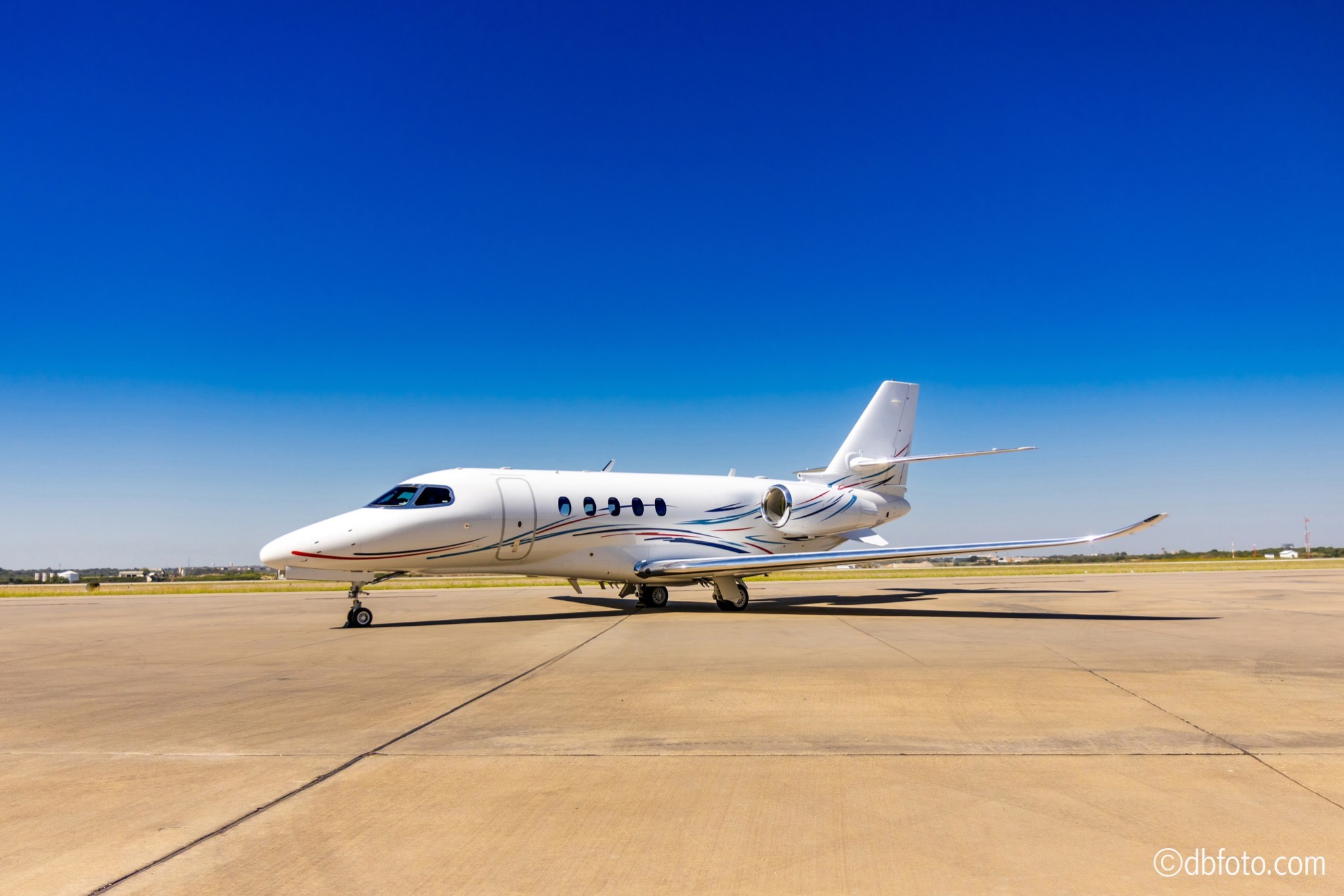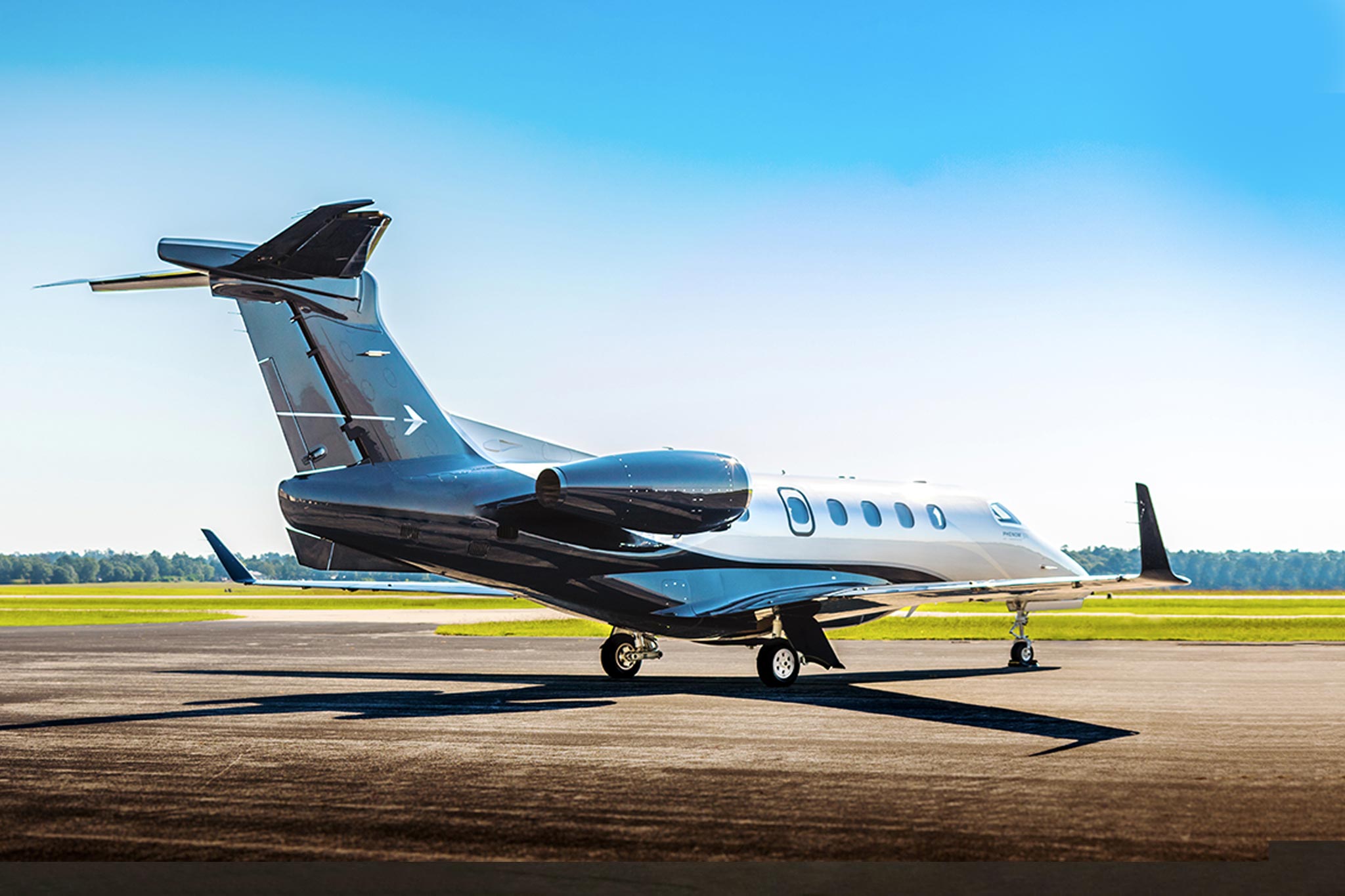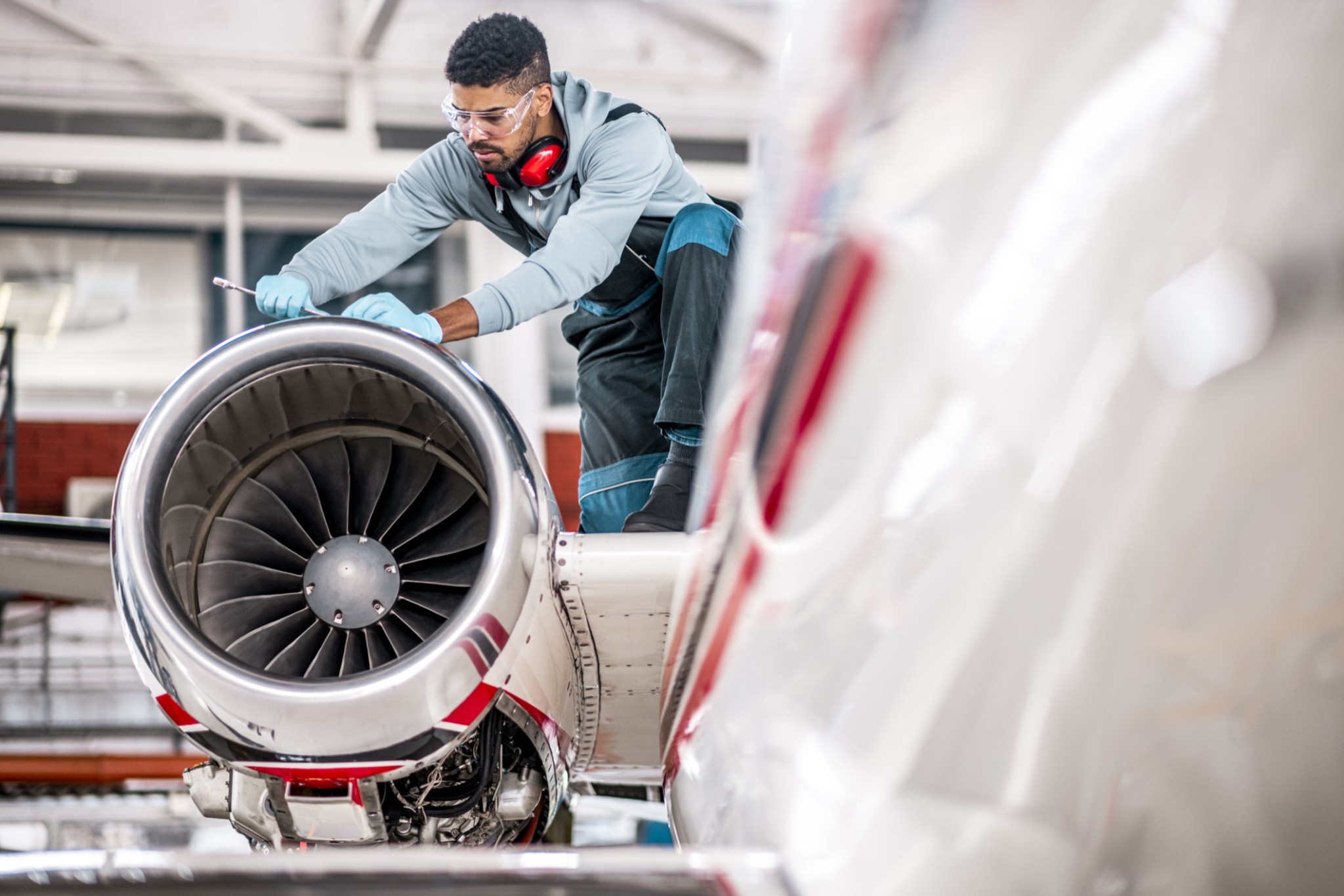
jetAVIVA’s Comprehensive Guide to the Citation Latitude
Date
December 13, 2023Author
Kandi Spangler, Managing Director jetAVIVAAn Overview of the Citation Latitude
Available Cabin Configuration in the Latitude
A NetJets Latitude vs. A “Normal” Latitude
The Latitude’s Over-Water Restrictions to Hawaii
An Overview of the Citation Latitude
The Citation Latitude first entered service in 2015, and by 2023 there were over 340 Latitudes in operation around the world. Nearly 80% of the fleet is based within North America, largely due to the airframe’s popularity with Netjets who owns nearly half of the Latitude fleet.
Textron designed the Latitude to replace the Sovereign+ – which it did in 2020 when the last Sovereign+ rolled off the assembly line. The Latitude is considered the next logical step up from the XLS+ in the Citation line-up, with a cabin length of 21.1 feet, placing it between the XLS+ with a cabin length of 18.6 feet and the Sovereign+ with a cabin length of 25.3 feet. The real benefit of the Latitude over the Sovereign+ however, is its newly designed 6-foot stand-up cabin with a flat floor, versus the dropped-aisle design in the Sovereign and XL models. Surprisingly, the Latitude incorporates many of the same features of the Sovereign+, such as the wing design, tail design, fuel capacity, engine model and the Garmin 5000 avionics package. The main difference being the body, or fuselage, of the airplane. With a range of 2,600 nautical miles (NM), the Latitude can fly non-stop from Los Angeles to New York. The aircraft is equipped with the NextGen-capable GARMIN G5000 avionics system, which includes three 14-inch landscape displays. The Garmin system also incorporates Synthetic Vision Technology, offering pilots a virtual-reality view of terrain, traffic, and runways, in low visibility conditions. Additionally, the Latitude features LinxUs, a system that always monitors the aircraft and reports any issues via satellite or WiFi connection. This allows for faster turnaround time in resolving issues and getting the aircraft back to normal operation.
Until 2020 when Textron ceased production of the Sovereign+, buyers had a difficult decision between purchasing a new Sovereign+ or Latitude. Both airplanes have attributes that are appealing and most of the time the decision comes down to personal preference. The only time performance became a deciding factor is if the extra 150 NM was critical or if the owner planned on doing longer oceanic crossings, which the Latitude was limited or even prohibited in the case of Hawaii.
Considering the purchase of a Latitude and want to learn more? Give me a call. I love talking airplanes and helping my clients find the right airplane for their mission and budget.
Available Cabin Configuration in the Latitude
The Citation Latitude is known for its spacious cabin and comfortable seating in the midsize jet category. It features a newly designed flat floor, allowing for a 6-foot stand-up cabin height. In 2016, Cessna made updates to the interior of the aircraft to take advantage of the wider cabin space. The earlier serial numbers of the Latitude were equipped with smaller IPECO seats, but they were replaced with larger seats in the updated version. These seats are specially engineered to provide comfort and support, featuring top-grain leather upholstery.
There are three seating configurations available for the Citation Latitude. One configuration includes a large galley and seating for 7 passengers. Another replaces the galley with a two-place divan, allowing for 8 passengers. Then there’s a 9 passenger seating configuration, which includes a belted seat in the aft lavatory. This provides flexibility for catering options and passenger preferences.
One of the notable features of the Latitude is its low cabin altitude of 5,950′, which helps passengers feel refreshed upon reaching their destination. The aircraft is equipped with ten large windows positioned at eye level, creating a brighter and more spacious atmosphere inside the cabin. The refreshment center has been expanded, providing ample storage for catering supplies, and there is also a spacious lavatory available for passengers’ convenience.
Additionally, the Citation Latitude offers generous heated baggage storage with a capacity of 100 cubic feet. This allows passengers to bring their belongings comfortably and ensures that they are kept in suitable conditions throughout the flight.
Overall, the Citation Latitude provides a comfortable and luxurious flying experience with its spacious cabin, comfortable seating, low cabin altitude, large windows, expanded amenities, and generous baggage storage capacity. If you want to learn more about the Latitudes features and what I love about the airplane, give me a call. I love to talk airplanes.
A NetJets Latitude vs. A “Normal” Latitude
In 2012, NetJets placed an order with Textron worth a staggering $17.6 billion, which included the purchase of 150 Citation Latitude aircraft. This historic order solidified NetJets as the largest owner of Cessna business jets, emphasizing their confidence in the reliability and performance of Textron’s products. By 2019, Netjets took delivery of its 100th Latitude and is expected to take delivery of at least another 125.
Netjets’ investment in the Latitude validates the popularity and reliability of the model, which continues to be one of their best fractional program sellers. This alone translates into parts availability and maintenance support for all Latitude owners, making it a solid choice for end users as well. One major difference between the Netjets’ livery versus a Latitude sold to the public from the factory, is the interior design. Other than a few early 2015/2016 models, those Latitudes sold to an end-user were delivered with the larger, more desirable, IPECO seats for added passenger comfort. Netjets however, has stuck with the smaller-style seats (the same seats as the Sovereign+) and seven passenger seating configuration allowing for more room to move about the cabin. There is some speculation Netjets did this to promote upselling to a larger cabin if their fractional owners needed more capacity, but that rumor has not been substantiated.
Our experience selling Latitudes – including an early serial number with the Netjets’ style seating – indicates that the marketplace prefers the larger IPECO seats. Converting the smaller seats to the larger ones will cost well over $500,000. Therefore, it stands to reason that when it comes time for Netjets to start selling their Latitude fleet, non-Netjets Latitudes will hold their value better. In the meantime, enjoy the benefits of operating an airplane used by Netjets because it will likely mean better availability of parts, maintenance, pilots and insurance rates.
If you’re considering a Latitude purchase but want to understand the effect Netjets may have on your purchase or resale value, just give me a call and I’ll walk you through the pros and cons. I love talking numbers and predicting future values.
The Latitude’s Over-Water Restrictions to Hawaii
“ETOPS” – or Extended-range Twin-engine Operational Performance Standards – is an aviation acronym referencing a set of regulations implemented to enhance safety during flights over areas with limited or no airports available for emergency landings. The concept of ETOPS was introduced to ensure that twin-engine aircraft could safely operate on long-range routes that may require flying for extended periods of time away from a suitable diversion airport. In reality, most Part 135 business aircraft charter operators in the U.S. are not certified for ETOPS operations. Instead, guidelines were developed and put in place by the aircraft manufacturers that would dictate the allowable ETOPS range by which a non-ETOPS certified charter certificate holder could operate resulting in a document published in the airplane’s FAA approved flight manual (“AFM”) regarding Extended Range Operations for non-ETOPS operators.
It was in late 2020 that I stumbled across an interesting observation about the Latitude – it didn’t appear the airplane could technically operate to/from Hawaii under Part 135 regulations. So for the past four years, I set-out to learn more. What I gathered from these conversations, as well as an FAA regulations review and combing the guidelines outlined from the Latitude’s AFM – is that unless you can find a city-pair between California and Hawaii that is less than 992 nm, departing from a runway long enough for the Latitude to take off with full fuel; or if you have a FSDO that is willing to waive the non-ETOPS guidelines – it doesn’t appear to be legal. This conclusion was largely derived referencing the non-ETOPS guidelines in the Latitude AFM Page 7-120-1 as well as the FAA’s Federal Aviation Regulation (“FAR”) Part 135.364. The airplane may not be the best option to fly to Hawaii under Part 91 rules either, although it can be done, and has been accomplished in the right conditions. This revelation surprised me because at this point Textron had announced the discontinuation of the Sovereign+ from its production line – an airplane with roughly 300 nm more range and additional oxygen capacity that could easily fly to Hawaii. Therefore, customers who wished to acquire a new airplane with the expectation of flying it to Hawaii would have to make the jump into Textron’s super-midsize cabin, the Citation Longitude priced at $30M today. Or, they could look at pre-owned options on the Citation line-up, such as the Sovereign+ or Citation X.
The Problem Scenario
Aside from the legality of flying the Latitude under Part 135 as outlined above, the other problem scenarios are encompassed in a common term used in the aviation industry called a “wet footprint.” Aviation International News (“AIN”) defines a “wet footprint” as “how far it is safe to fly over water and be able to make it back to land after certain emergencies. The primary considerations are medical emergencies, which would require the airplane to fly as quickly as possible to the nearest city with suitable medical facilities; a failure or required shutdown of one engine, which would necessitate a descent to a lower altitude in the 20,000s and a subsequent slower airspeed and higher fuel burn; and a loss of pressurization, which would require a descent to 10,000 feet, where the outside air is breathable, but fuel burn is even higher.” The points at which these safety calculations are made is called the equal time points (“ETPs”) and are calculated for the scenarios listed below:
- Depressurization: In the event of cabin depressurization at altitude, the plane would need to descend to a maximum of 25,000 feet until oxygen is depleted, then down to 10,000 feet, where the air is breathable. However, flying at these lower altitudes increases fuel burn. The crew must plan the flight in such a manner that ensures they have enough fuel to reach the remaining distance if depressurization occurs over the ocean between landing options.
- Loss of Engine: If one engine fails, the plane will have to continue the flight with a single operating engine. A rare occurrence indeed… but it can and does happen. In this scenario, the single operating engine will not have enough thrust to keep the airplane aloft at the planned altitude, usually in the upper 30,000s or low-to-mid 40,000s feet. This will require the aircraft to descend to a lower altitude (usually in the 20,000s feet) where the remaining engine can provide enough thrust to keep the plane aloft. Flying at this lower altitude consumes more fuel, so it’s crucial to ensure that there is enough fuel to reach a suitable landing spot if this scenario happens halfway to the destination.
- Baggage or APU Fire: In the event of a baggage or auxiliary power unit (APU) fire, the protocol typically recommends staying at a high altitude to limit the oxygen available for the fire. The engines should continue operating efficiently, allowing the plane to reach the intended destination. The problem here is that your fire suppression system in the rear of the airplane is shared between the APU and aft baggage in the Latitude. This system lasts a total of three hours and once you’re out, you can deploy the secondary bottle which will only last 15 minutes more. If the fire is not extinguished within this time, and the plane cannot reach land, the situation becomes problematic.
- In-flight Medical Emergency: One could argue that even if you are flying in an airplane with two engines and fire suppression to last 10 hours, that still wouldn’t get you to an airport with emergency medical assistance any faster. But it’s still a consideration and I would at least want to be mindful of this and carry something such as an automated external defibrillator (AED) onboard.
While these scenarios may seem unlikely, the regulations outlined in Federal Aviation Regulations (FARs) make business and commercial aviation one of the safest forms of transportation in the world. Our industry’s safety record is predicated on minimizing risk, thereby making air travel safer than travel by car. The stretch from California to Hawaii is truly one of the most challenging stretches to travel by air in the world. New York to England, and even Hawaii to Fiji, all have landing options within 2-3 hours from an airport; but not California to Hawaii. An emergency on this particular stretch over the Pacific ocean should not be taken lightly.
From my discussions with Textron regarding these limitations, the key piece of optional equipment the Latitude needs in order to make this flight to Hawaii possible when the weather conditions permit, is the extended range oxygen system, which increases the available oxygen from 77 cu ft to 115 cu ft. For most of the scenarios listed above, the limitation has more to do with available oxygen than fuel range, although both have little margin for error in the emergency scenarios outlined above.
So, if Hawaii is a place you like to visit once a year and you’re operating under Part 91 flight rules, the Latitude may still be a good option, but you could need to charter a larger airplane for that particular trip depending on the time of year, your flexibility to go on the best weather day and how many passengers will be onboard. However, if Hawaii is on your short list of frequent destinations, my recommendation is to choose a different model. I’m not saying you need to run out and buy a Gulfstream G650, but this mission requires special consideration by you and your operations team. If Hawaii is not on your list of destinations however, the Latitude is a fantastic option that I recommend to many of my clients. It’s speedy, efficient and still offers the range and comfort of a super midsize cabin. If you need help deciding, give me a call to discuss the available options that will fit your mission and your budget. I love spending other people’s money, but you’ll be happy to know I’m thrifty, too.



